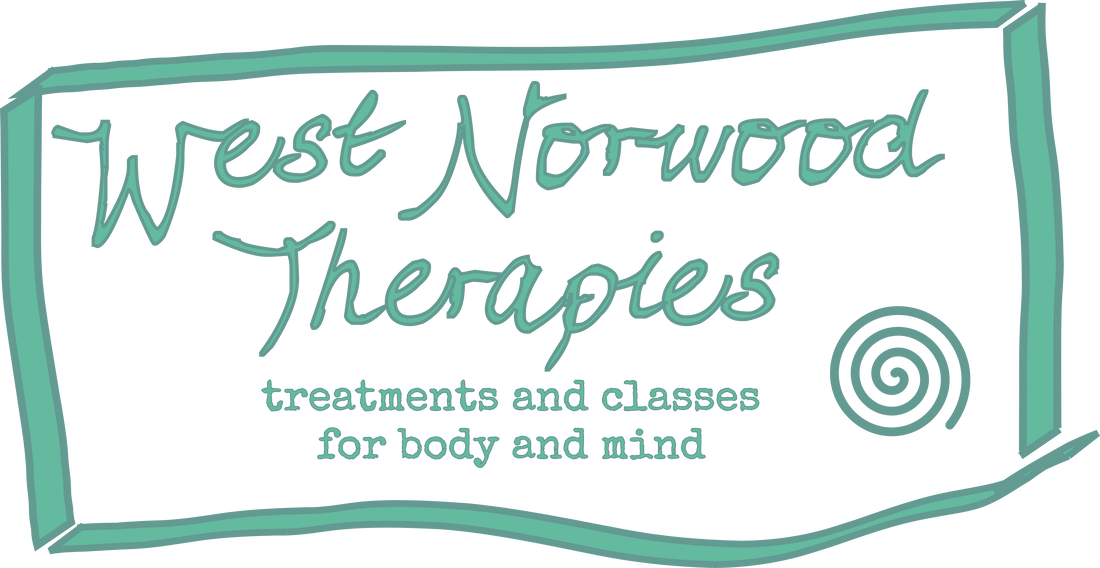|
Acupuncturist Philippa Summers delves into the world of healthy bacteria - microbiome - and gives some helpful insights and tips as to how this can benefit us along with a delicious saurkraut recipe to help us along. Did you know that your body contains roughly as many bacterial cells as human cells? Along with viruses and fungi, and their collective DNA, they make up our microbiome. The microbiome varies hugely from person to person and plays a crucial role in determining our health. There is a whole eco system living on your skin and within you, in your respiratory tract, your reproductive tract, in breast and other tissue, but primarily in the intestines – the gut microbiome. Among them are vitally important beneficial microbes that help to keep the disease-causing pathogens at bay, while also enhancing and interacting with many of the vital internal processes that work to keep us well. The Benefits of a Healthy Gut Microbiome A healthy gut microbiome has benefits that extend throughout the body and is considered by some to be equivalent to an additional organ, such is its importance. It plays a crucial role in helping to maintain and support metabolic function, immunity, plus cardiovascular, respiratory, reproductive and menopausal health, as well as helping with sleep, mental well- being and brain function. It is an area of intense research, with more being discovered all the time. The scope of its influence cannot be overstated. A healthy gut microbiome is anti- inflammatory and helps to combat the development and progression of a whole range of chronic health issues and to reduce infections throughout the body, helping in the fight against antibiotic resistance. Type 2 diabetes, obesity, kidney disease, Parkinson’s, atherosclerosis, high cholesterol, hypertension, dementia, urinary tract infections, respiratory infections, vaginal infections, asthma, allergies, autoimmune diseases, IBS, IBD, some cancers...the list goes on... have all been shown to have an association with an unhealthy balance in the gut microbiome. It is the subject of ongoing research to determine the processes and balance of cause and effect between disease and the microbiome. A High Fibre Diet supports the Microbiome Our environment, where we live, who we live with, how we interact with our environment but particularly our diet has a huge influence on the microbiome, and for each of us our microbial fingerprint will be unique and changing dynamically all the time. A poor low fibre diet of refined carbohydrates like white flour, white rice and particularly simple sugars will encourage inflammation and take the balance of good bacteria to bad inan unhealthy direction. A healthy high fibre diet on the other hand will help to support the community of beneficial bacteria, which ferment more complex carbohydrates that we cannot otherwise digest, into nutrients with anti-inflammatory and metabolic health benefits. The beneficial bacteria lie mainly in the colon at the far reaches of our intestines and to feed and support them we need a diet where the carbohydrate portion of what we eat can pass through the upper reaches of the intestines to the colon without previously being completely broken down. Simple and refined carbs get broken down too high up in our guts but high fibre complex carbohydrates (wholegrains, vegetables, nuts, seeds and fruit) make it all the way to where they are needed. Aim for a wide variety of colourful plant foods including herbs and spices to aid digestion, and of course include proteins and healthy fats for a balanced diet. We feed these bacteria and they in turn feed us with the beneficial by-products of their meal. Think good housemates - you provide the healthy ingredients, and they cook up a feast! The healthy foods we provide them with are the prebiotics, the healthy ‘bugs’ are the probiotics. Choosing Probiotic Foods and Supplements Some species of these healthy bacteria will have established themselves as long term residents of our gut, beginning at birth and supported early on by breastfeeding. We can augment this existing population by eating fermented foods containing other beneficial live bacteria, or for convenience and maybe for specific health issues by taking them as supplements. To reap the benefits, we need to choose those that are alive and can survive through the upper reaches of the gut all the way to the colon as many cannot survive the acid of the stomach. How our individual microbiome interacts with our own metabolism and diet is complex and more in-depth studies that take a personalised approach are the subject of ongoing research, one of the largest being the Zoe PREDICT studies. A peek at these studies will show you how complicated a field it is. People with a histamine sensitivity may not tolerate probiotics and care should be taken by people with bowel conditions like IBS and IBD. Deciding which strains are most beneficial is a complex subject which varies from person to person and according to the health issues being addressed, and I suspect is obscured by the commercial nature of supplements and the influence on research. Lactobacillus and Bifidobacterium are the most widely recommended in supplements, with many species and strains of each offering different benefits. A little more of that below in relation to women’s health and gut health but to go into more detail is beyond the scope of my experience or this blog. If you prefer to take supplements in my opinion Optibac are a reliable good value brand and provide a simple useful guide with formulas for a variety of situations: every day, after taking antibiotics, for women’s health including during pregnancy and for gut health. Symprove receives wide recommendation but is much more expensive and is limited to a single multi-strain formula. I am not suitably knowledgable to offer any wholeheartedrecommendations but those are a couple of reliable options. You can eat fermented foods as well or instead. For Women’s Health including fertility and menopause Lactobacillus species support a healthy vaginal microbiome where they help to keep disease causing yeasts and bacteria at bay, by maintaining a favourable protective acidic environment. From the research so far, implantation and reduced incidence of early pregnancy loss are also supported when the predominant species in the uterus are Lactobacilli. They are of benefit when taken orally, even for colonising the reproductive tract. Lactobacillus species can also be helpful at alleviating some of the symptoms of menopause via the two-way interaction between oestrogen levels and the gut microbiome. Yoghurt, kefir and Sauerkraut are all high in Lactobacillus species and other lactic acid bacteria. For Gut Health For people with gut issues like IBS and IBD I would recommend seeking guidance from a dietary or nutritional specialist. Some of the otherwise healthy prebiotic foods can contribute to symptoms, and some probiotic strains can be helpful while others may exacerbate symptoms. Probiotic Fermented Foods For general health benefits why not try a range of different live unpasteurised probiotic foods such as kefir, yoghurt, kombucha, kimchi, miso or sauerkraut to see which you like and which suit you? Or try making your own. They can be more potent than probiotics supplements and much cheaper, too, and all have different microbial profiles and benefits. Some ferments like kefir and kamboucha contain a range of yeast and bacteria while others like yoghurt, sauerkraut and kimchi are predominantly bacterial. Additionally, as they have fermented over a period of time the fermented product will contain high amounts of more easily digestible nutrients that are a by-product of the fermentation process. Making your own fermented foods If you fancy making a home-made ferment you can try the simple sauerkraut recipe below. Incidentally, I was surprised to learn that sauerkraut, despite its German name, originated around 2000 years ago in China and came to Europe in the 1600s. Making Kimchi, a spicy Korean ferment, is similar and there are plenty of recipes online. If you really want to get into ferments then I recommend Fermentation by Asa Simonsson which covers a whole range of fermented foods and drinks including vegan dairy, or check out the many websites and blogs on fermenting. Sauerkraut Recipe You will need a container in which to ferment the veg before transferring it to smaller jars
for storage, and you will also need weights to hold the veg below the surface of the liquid while it ferments. You could use a large wide necked jar with a lid but you will need to keep an eye on it and keep releasing the gas that will build up inside. Or you may wish to buy a fermenting jar or a crock pot which allow the gas to release automatically. Some come with weights, others don’t. Ingredients 1kg finely chopped white or red cabbage (you can substitute some of the cabbage with grated carrot, beetroot and apple to make a total of 1kg veg) 15g sea salt Optional spices: 1 tbsp chopped garlic/ginger 1 tsp caraway seeds, chili flakes, peppercorns, seaweed etc Method • Place the veg, salt and spices in a large clean bowl mix well and massage with your hands for 5 mins. Leave for 5 mins. • Massage and squeeze again for about 20-25 mins until you have plenty of juice and the veg has softened. • Pack into the fermenting jar or crock, add the weight so that all the veg is completely submerged in the briny liquid. This is very important as the fermentation will spoil if the veg is exposed to the air. • Put on the lid and leave at room temperature to ferment. The fermenting jars have a valve, the crock has a sunken rim that you fill with water so the gases release automatically. Keep checking that the water level around the rim is above the notch in the lid. • Leave for anything from 5 days to 4 weeks depending on the room temperature and how sour you like it. I leave mine for about 10 days. As the sauerkraut ferments is becomes more acidic which most bugs can’t tolerate and you’ll end up with a tasty ferment rich in acid tolerant Lactobacillus. The result should be a crisp, slightly sour, flavoursome kraut. If it becomes mouldy, slimy or smells rotten then something has gone wrong, so discard. Pack into clean jars, pressing the veg below the surface of the liquid and store in the fridge. Keeps for weeks, months according to the experts but I’ve never left it that long. Great in a sandwich, salad or as a meal accompaniment.A word of warning - as your body adjusts to fibre and probiotics you may find you are a bit more flatulent, but it should settle down after a few days, start with a little and build up. In any case, a little every day is better than larger quantities less frequently.
0 Comments
Acupuncturist and massage therapist Mihaly Rosta shares some interesting thoughts around the 'how' of our eating habits being as, if not more, important than the 'what'. ow important is it to have the right food on your plate?
I usually see a divide amongst my friends and clients when it comes to diet and food. Some people just eat for the joy of it, not caring much about if they eat a lot of carbs or meat. Whilst other people can be “almost” obsessive about what they eat. May that be superfoods, very specific vegetables and meat, etc. So what is the correct attitude to diet? Well, I of course could not give a simple answer to such an important question. Especially as I am not a dietician. However when it comes to Chinese medicine, we always strife for balance. Walking the middle path. Sure, it is important to have a varied diet -according to both food energetics, colours, food groups- but I find it much more important to look at how people eat and digest. In my experience, our mental health and eating habits combined has a much stronger effect on our digestion and general health than the types of food we eat. Do not get me wrong, I am not saying that we should all eat white bread, milk and sugar 3 times a day. I am referring to the fact that if you have a varied intake of vegetables, fruits and meats/nuts, you should not worry too much about whether it is organic or not, or how many superfoods and brown rice you include in your diet. What is important then? 1. Structure and rythmn It is generally important to follow a rythmn in our daily life. Structuring our days around our meals and sleep can provide with a healthy l. So we priorities ourselves, our nourishment amongst other responsibilities. 2. Rest Taking breaks between meals (3-4 hours) gives our digestive system a rest, as opposed to continuous snacking which will overwork our Spleen and Stomach. 3. Focus /mindfulness Eating should be about the food and our nourishment. The taste, texture, colour, smell of our food should be in the focus of our mind when we eat. Not TV, Netflix, news, daily tasks or plans for the week. Let’s do ourselves a favour and eat mindfully. Just when we decide on the food we eat, we should apply the same mindfulness during our time of nourishment. 4. 2/3 There is a Chinese saying that you should only fill your belly 2/3 of the way, so there is space for Qi to do the digestion. Overeating is overtaxing on our digestive system. Finding the correct amount of food that does not leave us hungry, but also doesn’t makes us sleepy is essential. 5. Fluids It is important to drink plenty of fluids during the day, however it is best to avoid drinking with our meal. If you have a weak digestion, you may find it beneficial to drink digestives 20 minutes prior to your meals. Or if your meal seems to settle in heavy (lots of fats/oils) you may find drinking a (half) shot of clear spirit (I recommend Bison vodka for flavour 😛) also very beneficial. On a different note. There seem to be a misconception about the amount of fluid we all need to drink. Generally speaking of we want to hydrate ourselves we have to include fluid-ful vegetables in our diet. Soups, curries, tomatoes, courgettes, etc. 6. 100 steps Digestion does not stop when we finish eating. On the contrary. It’s fairly important that we rest after a meal for about half an hour. The Chinese has been recommending 100 slow steps after eating. As (slow) walking aids the intestinal movements (peristalsis) and thus digestion. 7. Avoid going to bed on a full stomach Simple as that, we should not be wasting our energy on digestion whilst we are sleeping. More over, it is most beneficial to have a bigger gap (intermittent fasting) in our day when our digestive system is to rest. 8. Anxiety = IBS Last but not least, looking after our mental health is perhaps the most important of tasks that we need in order to have a healthy digestion. I’ll talk about this more in detail another time. So these are only a few points that are in my opinion are just as (if not more) important than the quality of the food we eat. Thus if you are suffering with any digestive issues, you may find it beneficial to go through this list before you start cutting out your favourite foods. Of course Acupuncture is an amazing tool to help/reset the digestive system. So if you feel you need some additional support in that regard. Do not hesitate to get in touch. Happy Eating! Acupuncturist and kitchen dynamo Philippa Summers shares some guidelines for a hearty winter breakfast of champions that will warm you from the inside out and stoke your fire for the day ahead. Yum! What do you have for breakfast? Do you even have breakfast? It’s often a meal that people skip or habitually go for something quick like a cold bowl of cereal or a couple of slices of toast on the go but when the temperatures drop there is nothing like a comforting bowl of porridge to start the day and get the warmth going from the inside. It is quick to prepare, will sustain you all morning and is a gift to your whole digestive system. Try a water-based whole oat porridge, flavoured with a small spoonful of blood-nourishing molasses, and maybe some cinnamon and ground flax seeds.
Top with a sprinkling of pumpkin, sunflower and sesame seeds for extra goodness and a couple of spoonfuls of berries. I use frozen summer berries out of season and just warm them gently. For speed, and if you don’t mind a strangely coloured porridge just add them to the porridge towards the end of cooking. I like a splash of milk to finish it off when it’s in the bowl for that that combo of thick porridge and liquid milk. Delicious and nutritious! If you skip breakfast you may find yourself going for less nourishing alternatives as your blood sugar drops. It can precipitate a vicious cycle of sugar spikes, drops and unhealthy snacking. Starting the day with nourishing breakfast gets your eating habits off to a healthy start and one suggestion to prompt an appetite at breakfast time might be to replace supper with something very light late afternoon or early evening for a night or two, just to kick start a breakfast habit. Finally, try to make time to sit and enjoy your meals, including breakfast. The digestive process begins when we look at the food, anticipate it and the digestive juices start to flow. And we are more likely to chew our food well, another important part of the digestive process,if we are relaxed and not in a rush. Good digestion is as much about how we eat as what we eat. Enjoy! Sports massage therapist Lauren O'Sullivan shares some insights into what 'sports massage' actually is and the fact that it's benefits go far beyond sports people and also how the treatment might be adapted to suit you individually. The term ‘Sports Massage’ can sometimes be misleading if taken literally. It is of course a very useful, and often necessary, treatment for sports people, but it can also be beneficial for a whole host of different people. People working from home since the start of the pandemic might not have the best ergonomic set-up and as a result are experiencing neck or back pain. Take delivery drivers, who are sat in the same position all day, using the same restrictive movement patterns to drive. Think of the security guard, standing in a stationary position on their feet most of the day. All of these people and more are using their bodies in a way that will build muscle tension, increase areas of restriction within the soft tissues, and cause restrictions in ranges and ease of movement. Sports massage can help them! Sports massage helps to resolve chronic pain, injuries, muscle aches and restricted range of movement. At some point in our life, we have or will experience one of the issues listed above. What is great about sports massage is that it uses a range of techniques to assess and treat a problem, rather than following a repeated routine of massage strokes. Each treatment is tailored to the individual and your therapist will spend some time talking to you and listening to your story before assessing you physically. I have treated countless individuals and even if the problem seems to be manifesting in the same way, every body is different and responds differently to treatment, so no two treatments are ever exactly the same. Something that seems to put people off getting a sports massage is the reported pain that comes with it. Whilst some techniques can and will cause some degree of pain, it is never the goal of sports massage to cause pain. Your therapist should maintain good communication with you throughout the treatment in regards to pressure and pain, and make use of your breathing to help with relaxation in those more intense moments. I always give my clients a choice if I think that a certain technique is going to really help them but I know that it will be painful for them. I explain the technique beforehand and constantly check in during the application, giving them the choice to bow out at any point. Any deeper massage strokes are always applied very slowly, giving the tissues time to adapt and let me in without causing damage. If somebody is new to sports massage or is feeling particularly sensitive, I use lighter techniques to work with more superficial soft tissue. Sometimes, a lighter more relaxing touch is exactly what the client needs and it is important to realise that massage is mostly affecting the neuromuscular system rather than effecting change physically. Stress is a major factor is some muscle tension, particularly if focused around the shoulders. The nervous system responds to stress by increasing muscle contraction in order to protect the body and prepare it for fight or flight. A relaxing and gentle approach can melt away the tension because the nervous system is responding to that touch and sending signals to ease off protective muscle tension.  A sports massage should leave you with a feeling of freedom within your body, feeling lighter and moving with more ease. You shouldn’t feel limited by discomfort in your daily activities. Those little everyday stresses on your body can develop into chronic problems if left to their own devices. Sports massage plays an important part in the recovery process, whether that’s from an intense training regime or from everyday stressors. Regular massage allows the body to function with less restriction and the hands on approach provides an important element of social touch, something that has been lacking since the start of the pandemic. If you haven’t before, give sports massage a go this year and see the difference it could make in your life. As 'Blue Monday' - apparently the most depressing day of the year - looms WNT founder Jennie Duck looks at some small actions that can help us navigate times of bleakness. Welcome to mid-January, the time when the anticipation and excitement of Christmas is over, the days are short and grey, we are often beginning a long ‘term’ of work or education and spring can feel a long way off. This year we are also 2 years into a pandemic that has brough uncertainty, fear, mistrust and pain in abundance. Whatever our personal experience of covid has been to date, the atmosphere around our country – indeed around the world – cannot fail to permeate our own individual world and we may be feeling the residue of this for a time yet.
We have things that can help us, however, and there is hope and peace to be found in amongst any bleakness. These are some things that can help when we feel short on optimism, energy or hope. Rest. Our bodies need down time, they need to switch off and we can take a leaf out of nature’s book and hunker down in these winter months. Walks in fresh air. Sometimes going outside is the last thing we feel like doing…but if we can make the step it can really help us feel more alive and at peace. Music. Music can lift us or it can connect us to the difficult feelings we need to feel. We can create playlists for whatever we want – to dance to, to cry to, to sing along, to remember people and experiences. Hugging. IF we’re lucky enough to have someone we love nearby then there is little more wonderful than a long embrace. If we are alone we can still hug ourselves – google ‘butterfly hug’ or look for our post from a year ago about this. Creativity. Finding ways to express ourselves whether this is to release some dark emotion or create beauty from nothing, connecting to our creativity is connecting to life’s energy. Meditation. Staying present, being here, everything as it is. Let go of struggle, effort and getting to know your mind and body more intimately, it’s so valuable. Yoga. If you practice yoga regularly you might be familiar with the space, acceptance and support that yoga can bring. Talking and sharing. When we feel bleak the most tempting thing can often be to shut down and hide away. And yet there is likely someone near to you feeling the same thing and the connection that can be gained by sharing your experience can be an incredibly warming feeling. Space and solitude. Just as important as connection with others is connection with ourselves, stepping out of the busyness of life and finding some space to be with ourselves. Take time out for things you enjoy. It can be tempting to throw yourself into the ‘shoulds’ and zone out the rest of the time, but if we can really let ourselves have the opportunity to find joy and fulfilment in something, whether it is going for a run, dancing in the kitchen or stroking the cat this is important stuff that we would do well to make central rather than peripheral in our lives. Give up! Some days nothing will help and perhaps what is needed is just to retreat into the murky waters and let yourself do absolutely nothing whatsoever. Therapies. Last but by no means least, go for a massage! Or for acupuncture, reflexology, reiki, sound therapies or any other therapy that feels good to you, gives you a space where you are looked after and cared for and leaves you feeling rested and revived. So as we approach ‘blue Monday’ we can keep in mind there are some ideas that can be helpful when life feels less vibrant. And sometimes they can help us remember that spring is just around the corner. WNT founder and veg grower Jennie Duck considers her relationship with slugs and how learning to live with them could be a fertile ground (pun intended) for letting the 'bad' feelings coexist with the good. It’s wet in Scotland today. Very wet. The river outside our house is flowing with force after a relentless 36 hours of rain. Not the best day to be working in the veg patch but first chance in a while and there is plenty of old vegetation to remove, relentless weeds to pull and gazillions of slugs abounding. They seem to thrive in the wet and this morning I found tens of them, ranging in size from a couple of millimetres up to a couple of inches.
Then I began to explore yoga principles, to reflect and shift toward living more aligned with considered values. The yogic concept of ‘ahimsa’ - the idea of living in a non-harming way - presented a challenge and I began to wonder how that could work in a veg patch. We are an almost-vegetarian household and conscious about where and how we source any meat or dairy products we use and yet I was crushing slugs willy-nilly in the name of nicer looking kale. This year my attitude has been somewhat more laissez faire. I have transported slugs to the compost heap rather than drowning them with the weeds or squishing them. I have been less diligent with weeding, giving them more places to hide and more leverage to get up to the nice juicy leaves. They have gone rampant, the compost heap is obviously a brilliant place for them to breed and a brilliant place for them to work their way back to the veg patch or over to the greenhouse…
Acupuncturist Philippa Summers looks at the 'two week wait' in menstrual and ivf cycles and how she adapts treatment during this time when supporting clients in their journey to conceive and offers some helpful self care tips for this time. Trying to have babies when it doesn’t just happen easily can be a heart wrenchingly difficult time. There can be months even years of trying, balancing hope with uncertainty, even at times despair. Another cycle starts. Is this going to be your lucky month?
When supporting women with fertility I tend to focus treatment on the follicular phase leading up to ovulation, or in the case of IVF through the stimulation phase until egg collection and at embryo transfer. These are the times that research has shown acupuncture can have a significant influence on live birth rates (Zheng, 2012). Treatments around embryo transfer, when they can be scheduled in without adding extra stress, are also shown to have a beneficial effect on outcomes (Smith, 2019). Ideally, men and women would also have received some preconceptual lifestyle advice during the preceding months, not least of all to support egg and sperm quality as they develop and mature. Treatment can be aimed at regulating the menstrual cycle, supporting endometrial development and addressing other issues impacting on fertility. Treatment during the follicular phase will be aimed at supporting the processes that take place throughout the menstrual cycle including the luteal phase but what about treatment during the actual luteal phase or the two-week wait as it is commonly known, which follows ovulation or embryo transfer? How can Acupuncture help? As I have said, I tend to focus most treatment during the follicular phase but that does not exclude treatment during the luteal phase. It is a time to be cautious with any treatments that could disturb the delicate interplay between the embryo and uterine lining around the time of implantation, but treatments aimed at relaxation and good sleep can be positively beneficial. It is often an anxious time when every little twinge seems to take on some significance. An acupuncture treatment can offer a gentle wind down from the intensity of IVF or the pressures of trying naturally, at a time when sound sleep and a feeling of calm may be quite elusive. How can you support yourself during the two week wait? The preparations you have taken in the preceding months, weeks and days will help to lay the foundations but here are 10 tips to support implantation and help through these two weeks:
Good luck. Remember that even under perfect conditions there is only a 1 in 4 chance of conceiving each month, so it can take a while. Please contact me if you think I may be able to help you. WNT founder Jennie Duck considers the pull towards happiness at work that led her to establish West Norwood Therapies and celebrates the ways in which we can find happiness at work. (it's International 'happiness at work' week by the way!) This week is international ‘Happiness at Work’ week and it got me thinking about why I started West Norwood Therapies in the first place. To be happier at work!
I always loved my work as a massage therapist and now that I’ve not been practicing for a while I really miss the interaction with clients, working one-to-one with people in that way is a special thing. I loved the practical side of massage, of finding areas that needed attention and working on them to help bring relief and often insights for the client as to what was contributing to discomfort or what could help them in day to day life. There is an element of problem solving and the happy place where science meets art - this is really a blissful state for me when I find that balance. I loved the conversations that arose during that time together and the trust that built up over months and years of working with people. I loved the variety of personalities, of bodies, of challenges and of energy. I’m using the past tense ‘loved’ as if my massage days are over! When really, as my volcano mad son says, I am just in a dormant phase and am keen to become active again soon. Despite all of this interaction and variety working with clients, being a massage therapist can be a lonely job. You are always in the therapist role with clients, however friendly the interaction becomes. And unless you seek them out you can lack peer support. I worked in several clinics where I rented the room to see clients and I met other therapists there, but I felt like there was an opportunity for a more cohesive, shared working environment. And so West Norwood Therapies was born. The idea was that this would be a collaborative collective and we would all contribute to the environment and running of the place and we would have regular meetups to offer one another peer support and become a network and team. It’s our 7th birthday in October, a fact that makes me very happy indeed! And I feel even happier that the concept of a collaborative collective feels so collaborative and like such a collective now. Our team has evolved over the years and the shrinking of it with the closure of the studio room last year was a trauma that our smaller team has come through and I feel that we are now stronger than ever. I am happy in my work and I am grateful for the team that makes this possible. Over that long gruelling winter lockdown we had weekly check-ins which were a bit like group therapy, we all opened up and supported one another. This has made us closer and sharing our vulnerabilities has given us a resilience that we couldn’t have achieved without. Next weekend I’ll be in London for the first time since coming down to clear out the studio last summer. I am excited to see my lovely colleagues and have a meeting together to reflect on the past year and look forward to the next, to share and to plan, to celebrate and to look at what we have learned. I know it will be interesting, helpful, collaborative and fun. I am a lucky ducky to be in this position and I highly recommend opening yourself up to the possibility of strong work relationships and the happiness at work these can bring. WNT founder Jennie Duck expands on the question Why Do We Do What We Do in her blog reflecting on what she loves and misses about being a massage therapist and how finding a therapist you connect with is so important. Our team at WNT has been considering the question Why Do We Do What We Do? in honour of International Wellness Week and it’s made me miss working with clients more than ever!
For various reasons I haven’t worked as a massage therapist for 4 years now and I crave the return. I was setting up a treatment space at the start of 2020 but then covid hit and all of us had to hold back with the work we know can help so much, it has been tantalising for all! Helping people is a huge part of why I want to get back to it. During my time not working I have continued to be a client to various practitioners as well as interactions with medical professionals and I am all the more acutely aware of why what we do is so valuable. The hour that we spend with our clients is precious time, it is an intimate, intricate and opportunistic time where the bond that we develop allows our work to do its magic. Bodywork therapists have knowledge and intuition and skill and if we can hold the space for what needs attention and a good connection happens with the client then these all fuse together to give a powerful result. One thing I love is how my work as a massage therapist is to combine the science of my training in anatomy, physiology and massage therapy with intuition that comes from an innate sensitivity as well as hours of listening and working with clients. This combination of science and intuition leads to massage being a form of art – I sort of let my hands (and forearms and elbows!) go and find what they need to find. This makes massage a creative outlet for me and one that is in a relationship with someone that I am working with, so it is strongly connecting and rewarding in that way. Each of us in the team at WNT has our own approach to work – even when our treatments are ostensibly similar we are each unique as practitioners and how we approach our work. It is really a personal thing and, I believe, that that personal aspect is what makes our work so valuable. Connection really does have a powerful impact and I always encourage people to find the practitioner you connect with as this can determine the potency of your treatment and make it all the more enjoyable too. WNT founder Jennie Duck shares her thoughts on how shame get in the way of self care and how spending time with her own shame and prioritising self care has helped transform her life and relationships for the better. The idea of shame as an impediment to self-care has been niggling at me for a while. I wonder how much our ideas of what we ‘should’ be doing get in the way of what we really want to do and what we feel is a justifiable use of our time. I wonder how much we sacrifice ways we can nurture ourselves for the ‘greater good’ of work, family and duty and I wonder how much of a negative impact this has on our lives, and those around us, that we don’t always see.
When I talk about ‘self-care’ I am talking about things that nurture our bodies, minds and spirits. The things we love doing, things that make us come alive. Self-care is the things that nourish us. Self-care can be exercise, nutrition and meditation. It can also be music, art, creating something, playing with a pet, talking with a close friend. For me, the exercise, nutrition and meditation side of things are easier to get to. This is because my personal version of shame means that for me to feel worthy I must be ‘healthy’. But it took an outsider view from my husband when he told me a couple of years ago “I’m scared the mornings you don’t do yoga” to recognise that the value in taking time for myself extended beyond just me looking after myself, that it had a knock on impact on the rest of my family and life. I used to feel a lot of shame, too, around the good feelings that came from looking after myself in this way. I felt good and then felt ashamed that I felt good – life is meant to be hard, I’m meant to strive, I have responsibilities, I can’t be relaxed and happy??! So this led to spirals in how I responded and the ‘healthy’ behaviours became undermined by excessive consumption of sugar or alcohol or I just wouldn’t make a positive choice and self-sabotage myself. Two years later, now that my own self care is a priority in my daily life, I don’t have these battles. My husband doesn’t have to be scared the mornings I don’t do yoga because if I haven’t it’s probably because I have done something else nurturing or I know I will find the time elsewhere for it. It’s not so pressured and the overall benefits of making this a priority mean I don’t have the same level of desperation around it, I don’t need to escape regular life so much and I don’t have the same shame triggered in me to knock me off course. I am more resilient. To get to this point I had to spend time with that shame that trapped me. The shame that told me that I wasn’t good enough and that my time wasn’t only worthwhile if it was spent slogging on something or doing something for someone else. We all have our own shame triggers but there are common themes. Shame and vulnerability expert Brene Brown says “shame drives two main tapes: ‘never good enough’ and ‘who do you think you are’”. Both of these resonate for me and are shackles that still restrict me, but they don’t have the same power that they used to have. And now the next layer of freedom I am discovering is that I am now more able to move toward the things that I really want to do but aren’t as immediately ‘justifiable’ in my personal shame-frame of reference. I am spending time creatively, for the joy and fun of it – I still feel guilty about this and about choosing these solitary and ‘aimless’ ways to spend my time. I had to fight myself using the word ‘indulgent’ in this description! We can’t let go of all of these other things – my family, my work and paying the bills are all vital to me – but maybe we can ease up on the limitations we place on ourselves in honour of these if we can face the idea that perhaps its more than the reality of those getting in the way, that perhaps it’s our relationship with them and our relationship with ourselves that needs some attention first. And perhaps if we can do that then these things we are making the sacrifices for will become richer because of it. |
AuthorBlogs from the WNT team. For our blogs from before June 2020 please see individual profile pages - it's a good way to get to know practitioners too. Archives
April 2024
Categories
All
|
|
Visit us - by appointment only please - in the office block in the Access Self Storage premises at 443 Norwood Road, London, SE27 9DQ
info@westnorwoodtherapies.com Phone - please contact practitioners directly, or if not in a rush you can leave a message for us to call you back at 07931876931. |
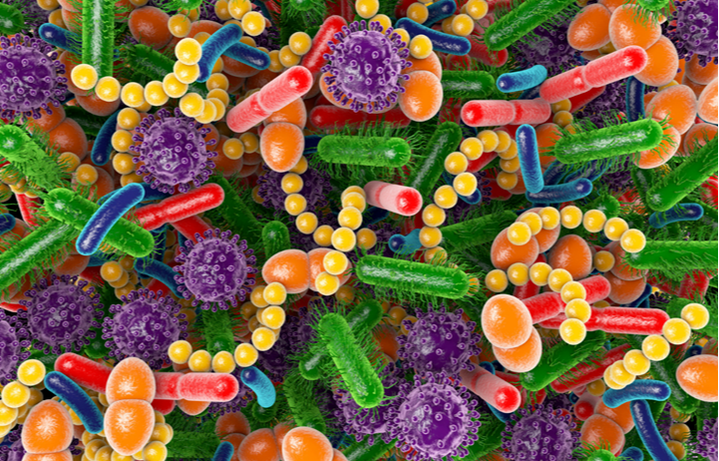
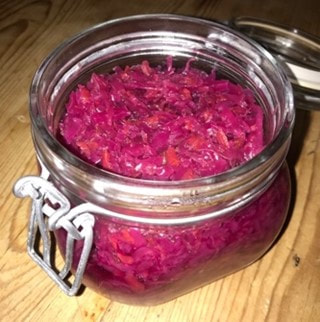
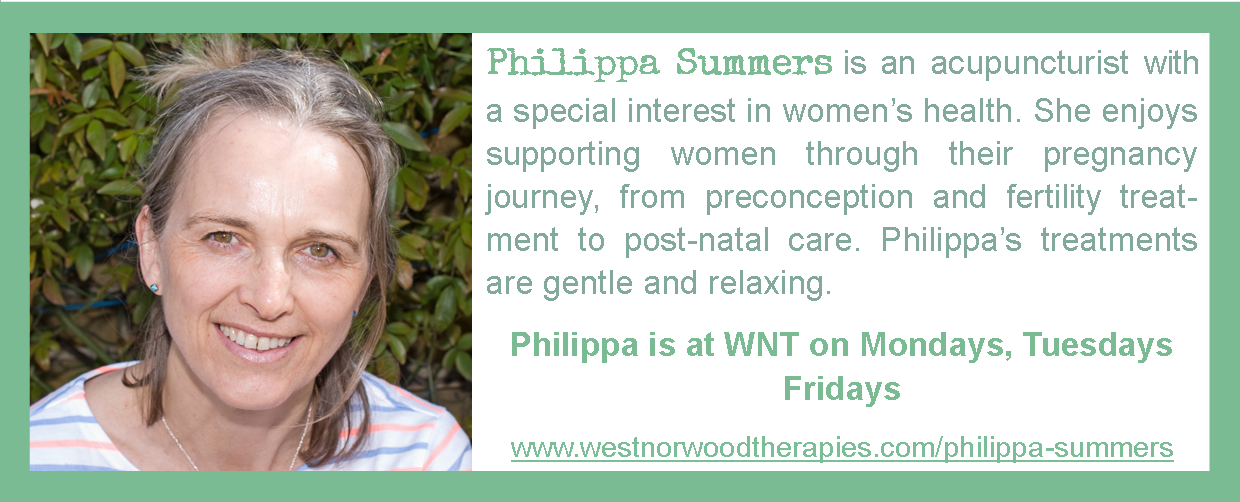
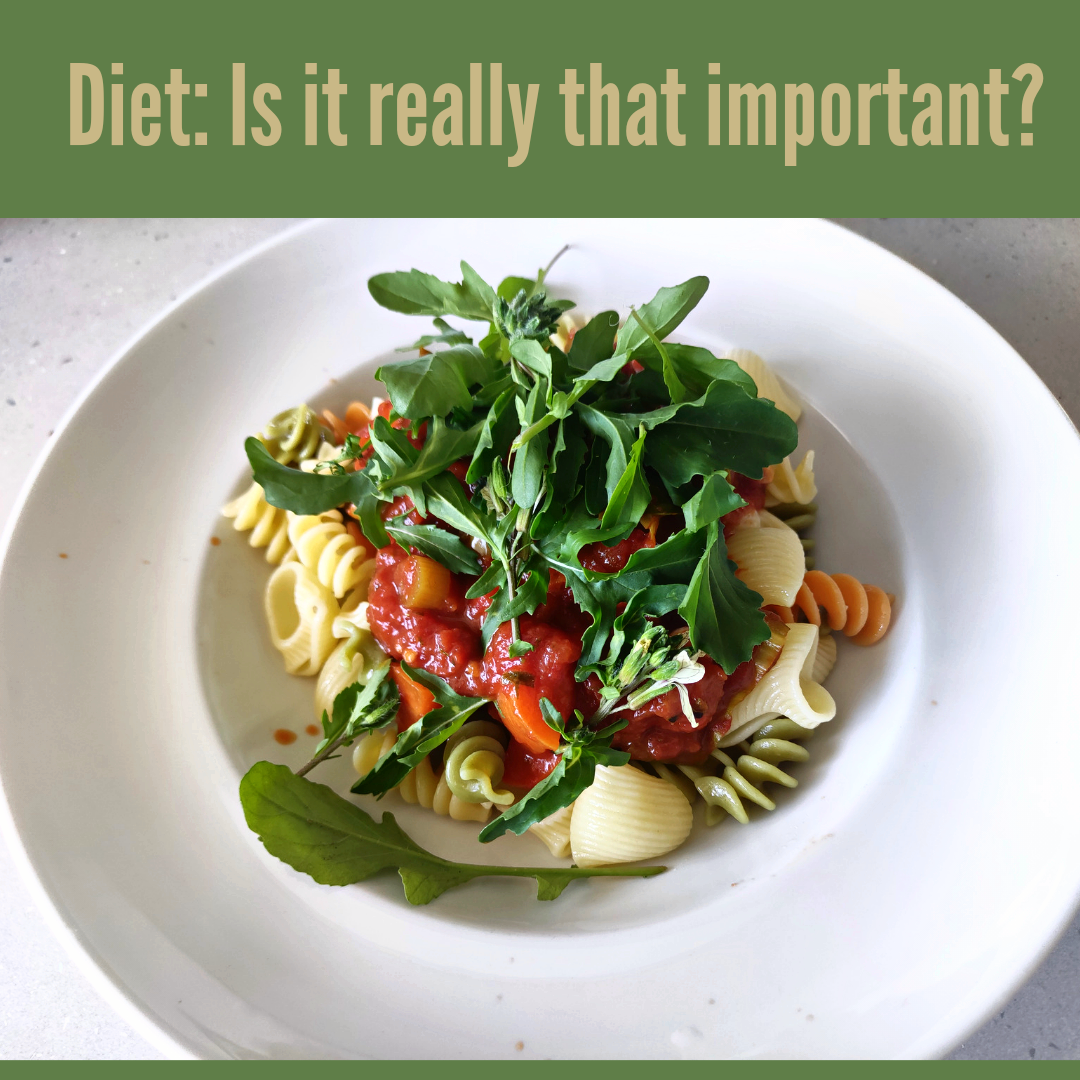
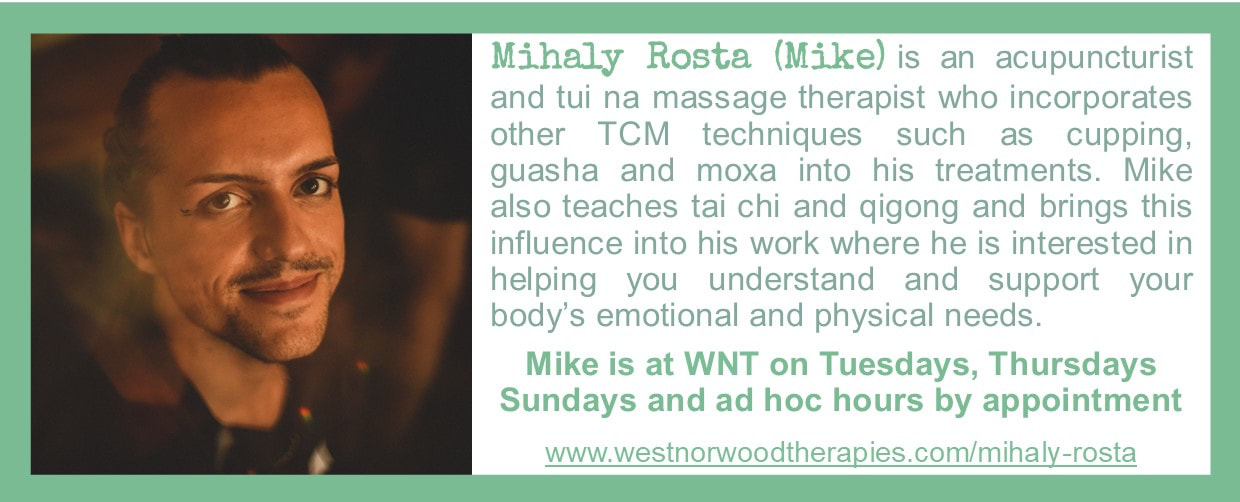
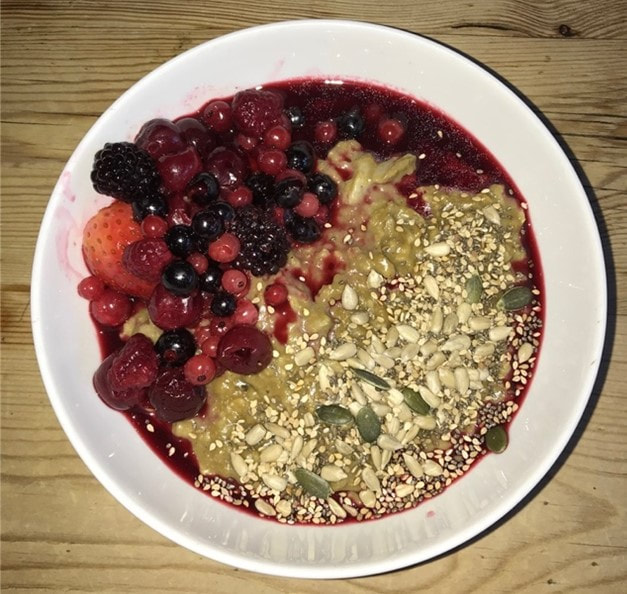


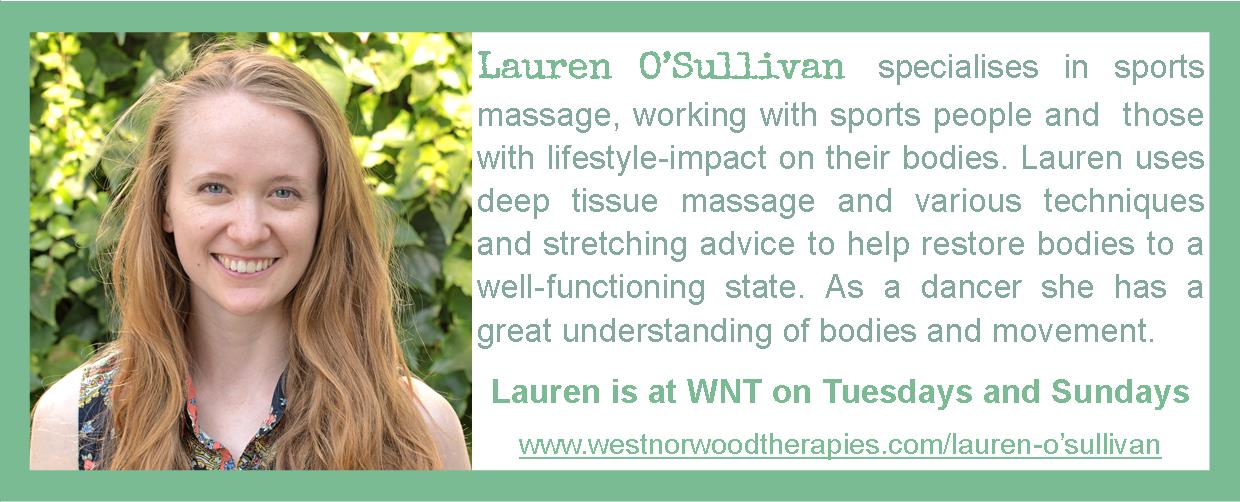




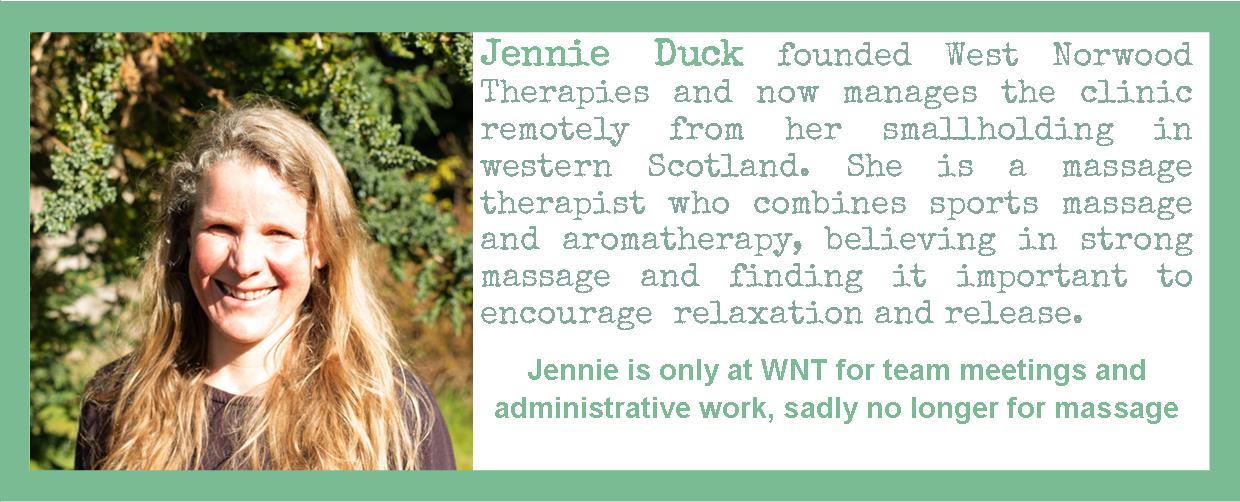
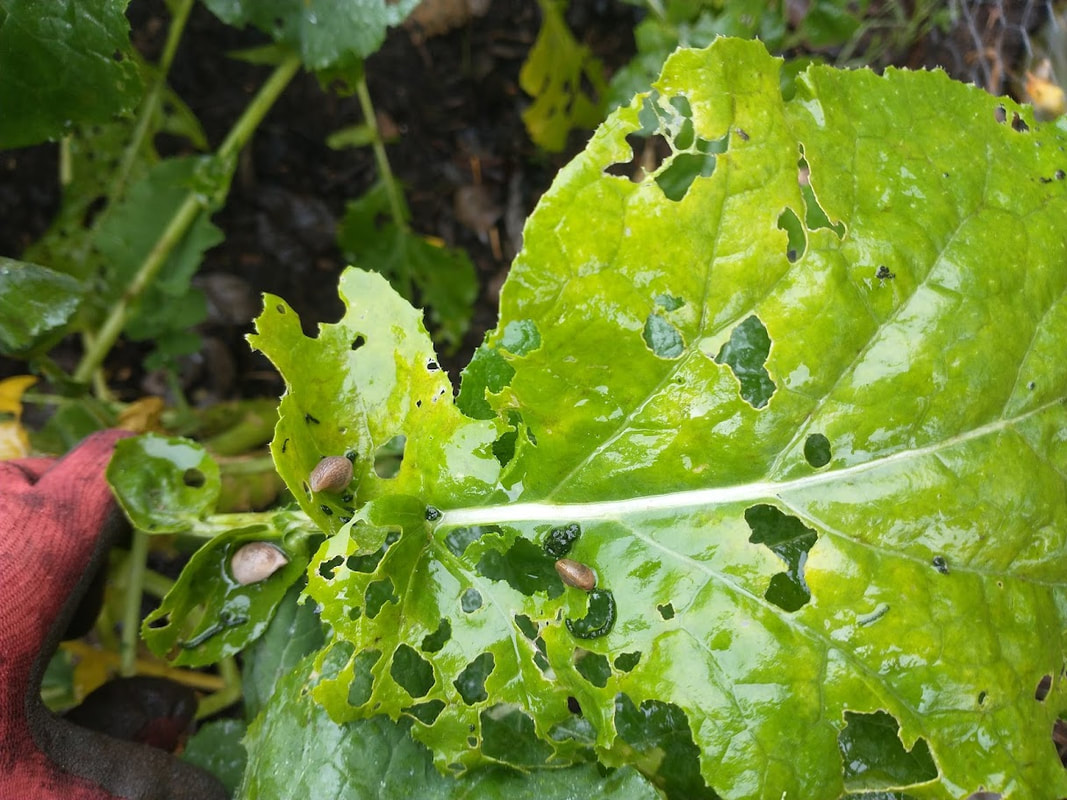
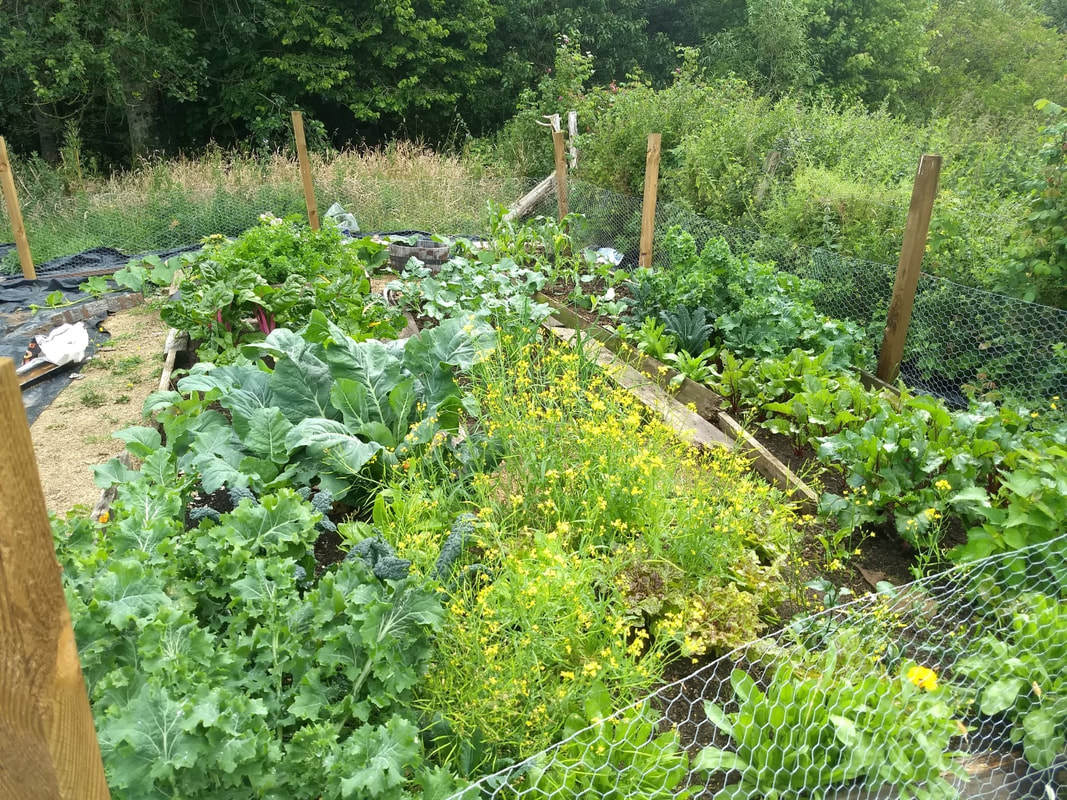
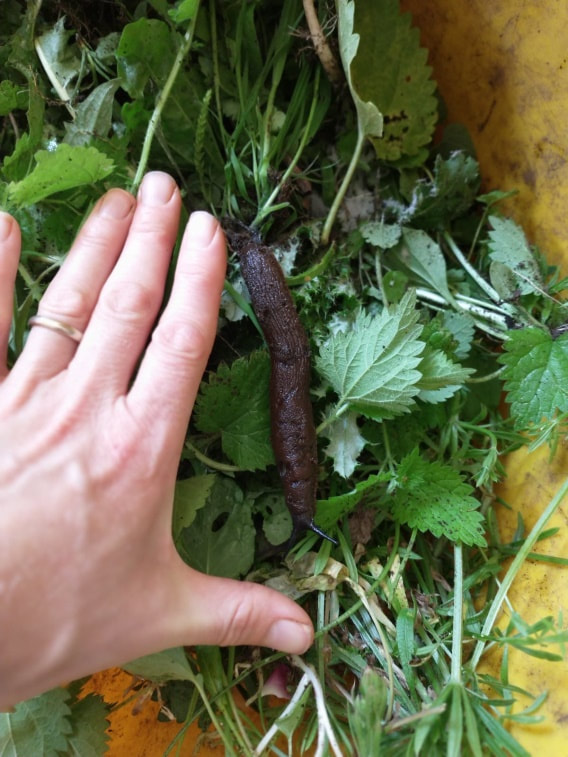
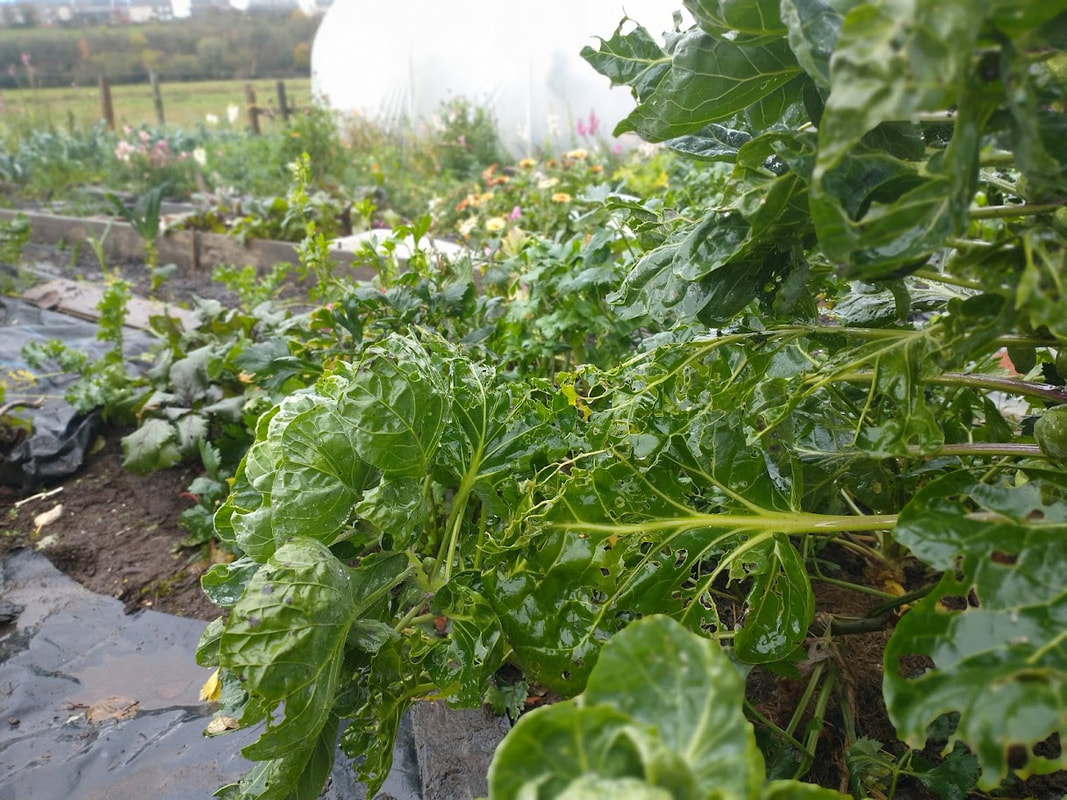
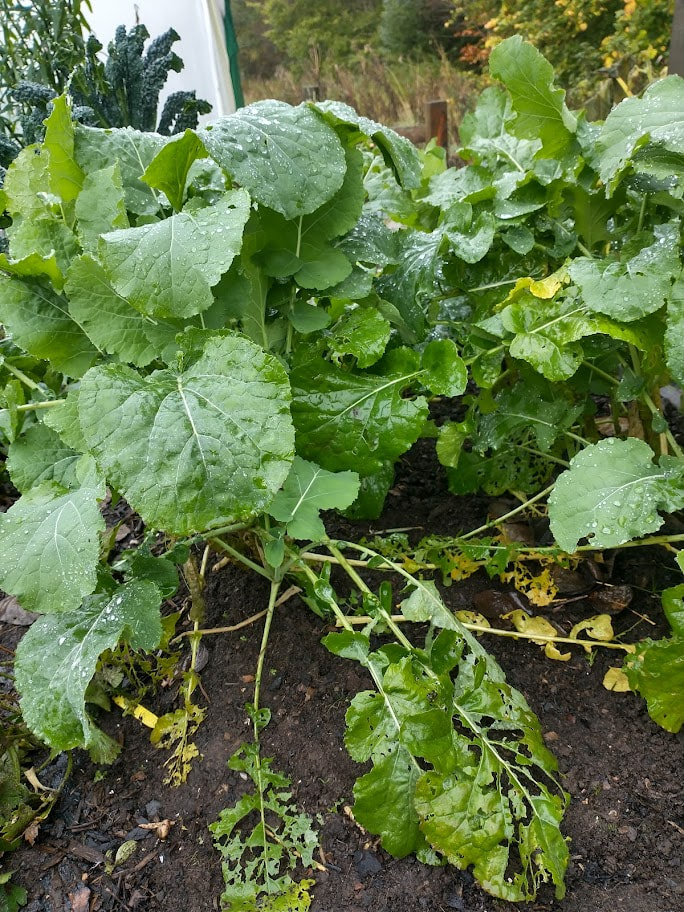

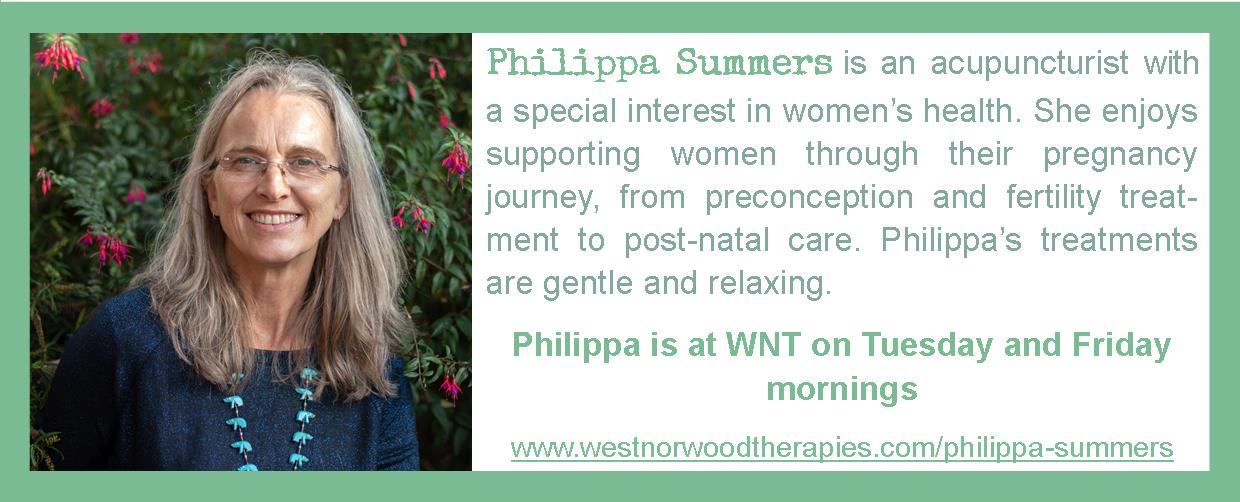
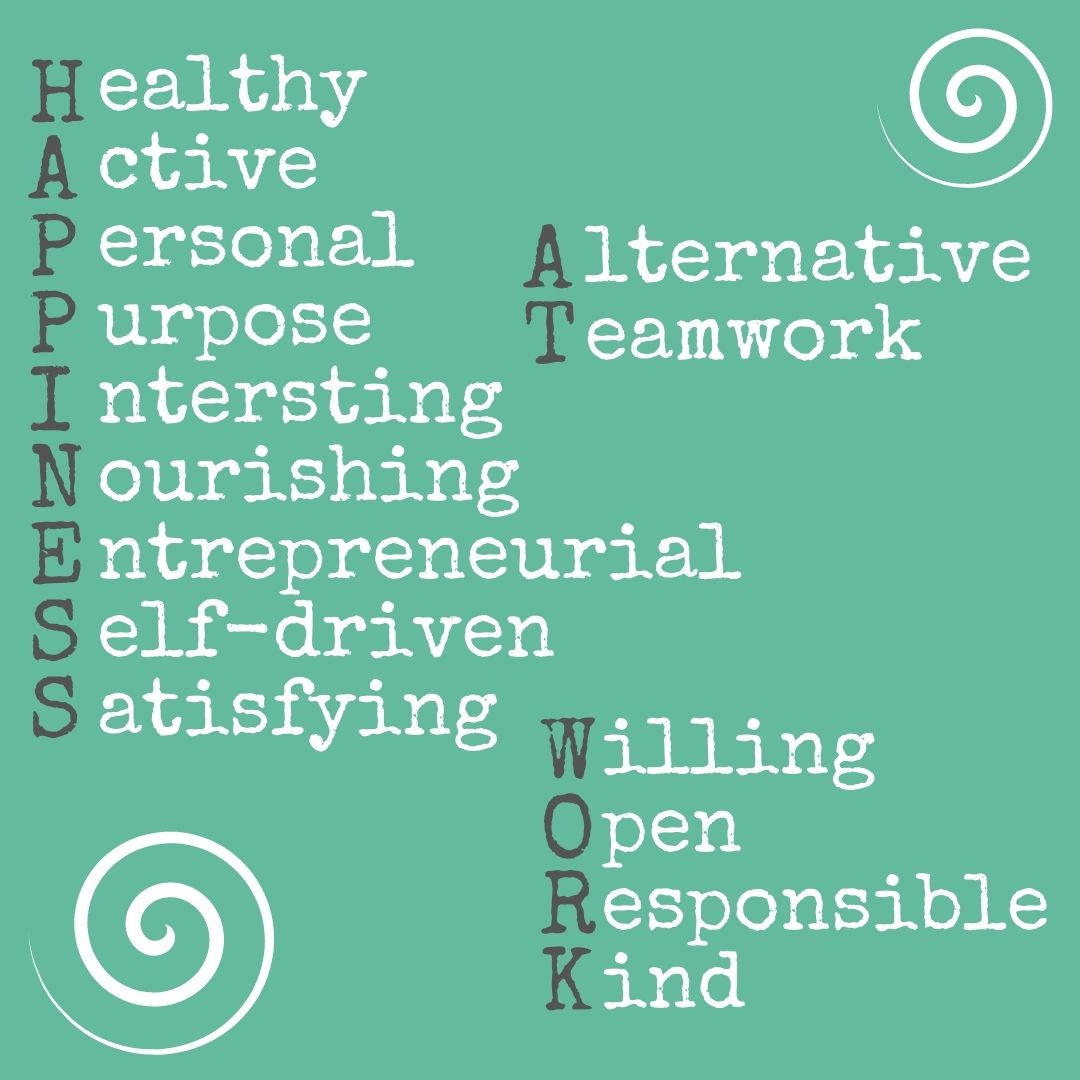
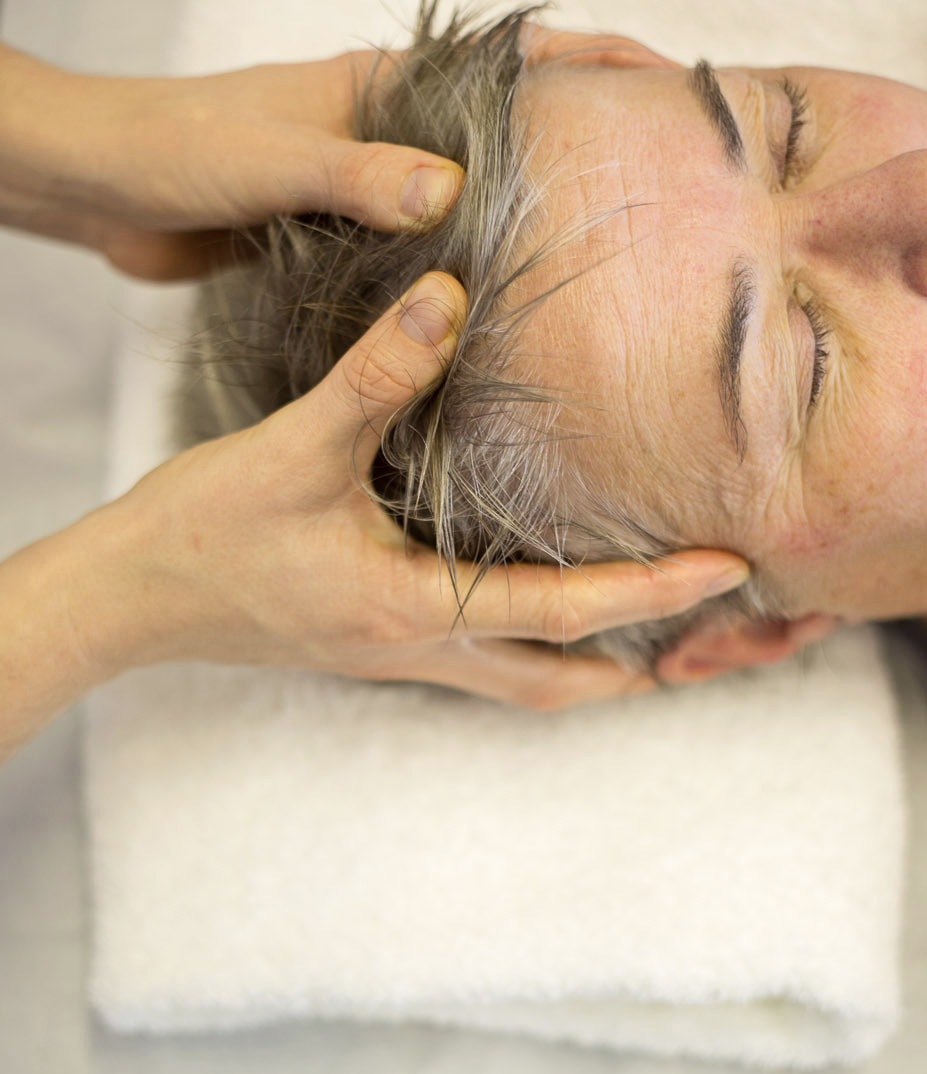
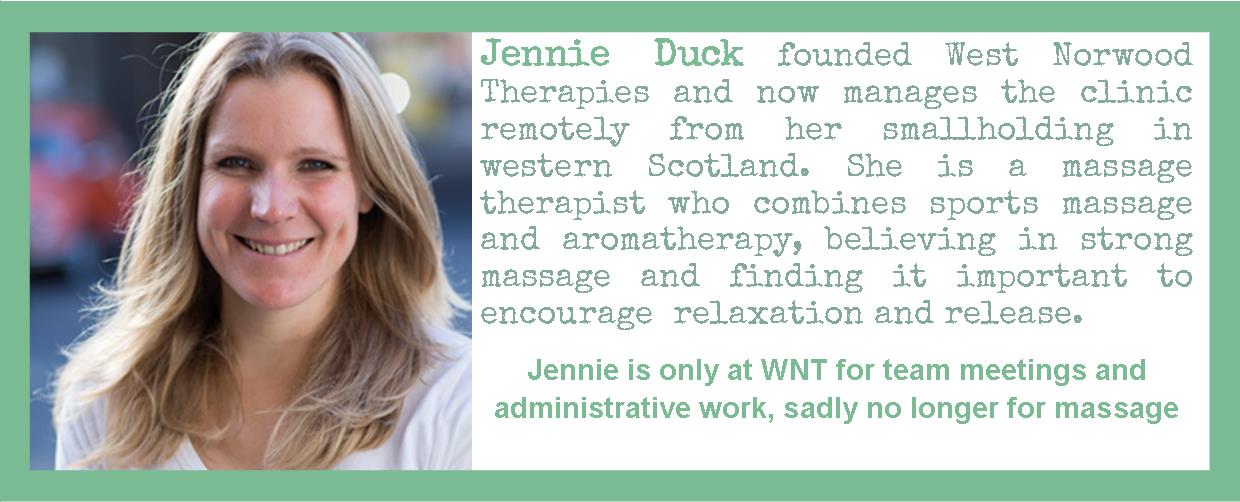
 RSS Feed
RSS Feed
